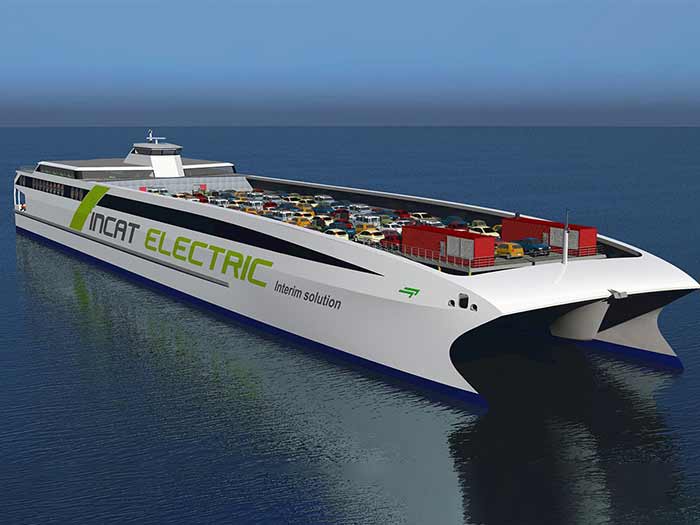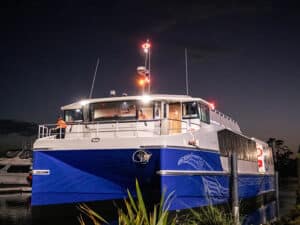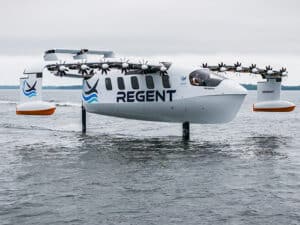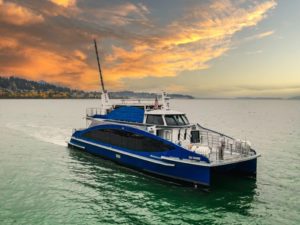
ABB and Incat Tasmania team up on lightweight hybrid-electric RoPax ferry
Written by Nick Blenkey
Incat 148E would initially be powered by a hybrid-electric solution, with greater use of batteries when shore charging infrastructure is in place.
ABB and Australian shipbuilder Incat Tasmania are to explore building a 148 meter long RoPax ferry with hybrid-electric propulsion that could be transitioned to battery power as shore charging becomes available. The announcement paves the way for ABB to supply zero-emission power and propulsion solutions and evaluate a future commercial arrangement for the 148-meter long catamaran and similar vessels.
Under a Letter of Intent signed at the Interferry event, the parties will explore building a lightweight fast ferry featuring hybrid-electric propulsion. The project seeks a transitional route to zero-emission operations for the ferry segment.
“All at Incat are extremely excited at having the opportunity to work alongside ABB,” said Robert Clifford, founder and chairman of the board, Incat Group of Companies. “This collaboration combines the world’s leading global technology company and the world’s leading lightweight shipbuilder into a partnership that is 100% focused on a completely green energy transportation solution of the future.”
“Lightweight Incat ships use up to 40% less power than an equivalent steel ship, which means up to 40% less emissions,” continued Clifford. “We’ve done extensive work in applying our excellence in ferry design to the specifics of electric propulsion. ABB is the ideal partner to help Incat realize our ambition to lead the shortsea shipping industry into a more sustainable future.”
Conceived by Revolution Design, Incat’s in house design office, the hybrid-electric ferry, designated the 148E, would be built in Australia to DNV class, operating at speeds of up to 21 knots. It would feature ABB’s Onboard DC Grid power distribution, ABB Ability Power and Energy Management System (PEMS), 800xA distributed control systems, a remote diagnostic system, and two Azipod® propulsion units enabling highly precise control and maneuverability maximizing efficiencies.
“There is no single solution where shipping’s emission challenges are concerned and we have to be imaginative in this transition to more sustainable ferry operations,” said Palemia Field, global segment manager, ferries, at ABB Marine & Ports. “Considerations of what a future ferry could or should look like and how it would operate are bringing bold thinking to market. ABB’s innovative electric solutions are an enabler for forward-looking companies like Incat.”
In the first instance, the hybrid-electric propulsion solution envisioned for the Incat 148E will involve the vessel’s diesel engine charging a shipboard battery, whose output provides the flexibility in power management to improve fuel efficiency and cut emissions. When shore charging facilities are available, Incat-built electric ferries would make greater use of batteries, with project goals envisaging installed battery power of up to 30 MWh.




